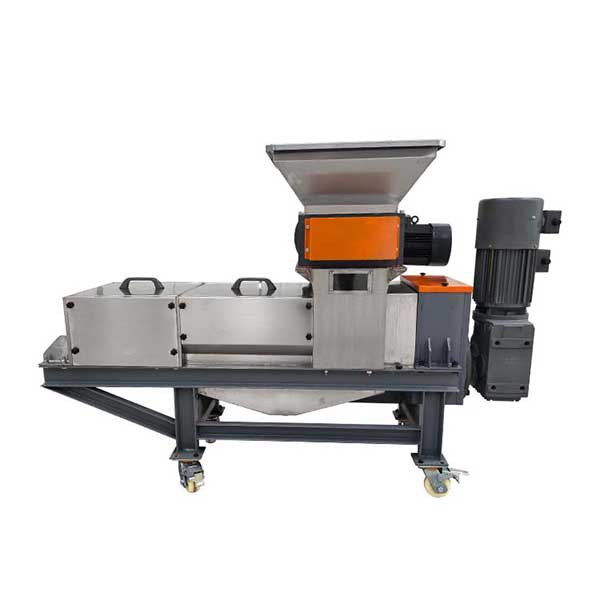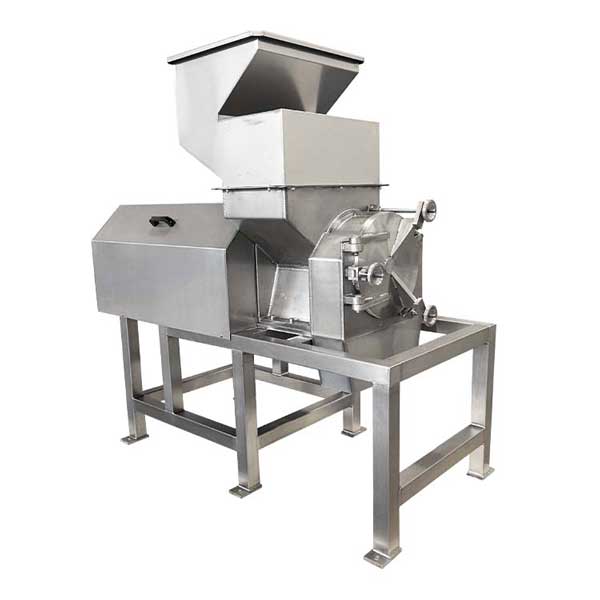Description
If your business handles large amounts of vegetable scraps, fruit residues, or kitchen waste, you know the challenges:
- Waste is too wet to transport or store.
- Odor and leakage cause hygiene and environmental issues.
- Storage and disposal take up space and cost.
The fruit and vegetable waste dewatering machine from Fuxun Machinery will be a great option. This system combines shredding and screw press dewatering into one continuous process.
It crushes, squeezes, and dewaters fruit and vegetable waste efficiently — cutting moisture to about 60%. By squeezing out excess liquid, it greatly reduces the volume and weight of waste, making it easy and economical to store, transport, and recycle. It is primarily used in:
- Fruit & vegetable processing plants
- Food waste or municipal organic waste treatment centers
- Juice factories and agricultural waste facilities
- Fruit and vegetable markets or farms
Specifications of Screw Juicer Machine
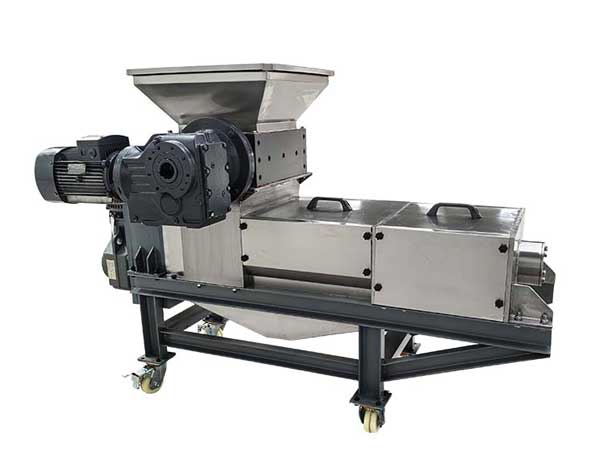
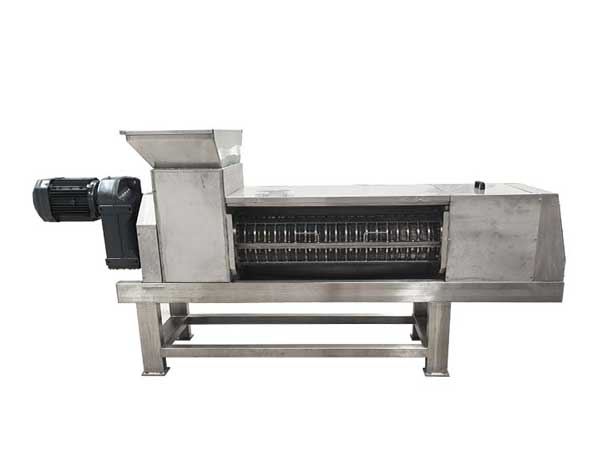
| Model | FR-0.5-180 | FR-260 | FR-350 | FR-420 | FR-500 | FR-550 | FR-630 | FR-870 |
|---|---|---|---|---|---|---|---|---|
| Processing Capacity | 0.2-0.5 t/h | 1 t/h | 2 t/h | 3-4 t/h | 5-6 t/h | 8-10 t/h | 15-18 t/h | 30-40 t/h |
| Screw Diameter | 180 mm | 260 mm | 350 mm | 420 mm | 500 mm | 550 mm | 630 mm | 870 mm |
| Screw Speed (r/min) | 5-15 | 5-15 | 5-15 | 5-15 | 5-15 | 5-15 | 5-15 | 5-15 |
| Hydraulic Power | – | – | – | 1.1 kW | 1.1 kW | 1.1 kW | 2.2 kW | 3 kW |
| Motor Power | 3-4 kW | 5.5-7.5 kW | 7.5-11 kW | 11-15 kW | 15-18.5 kW | 22 kW | 30 kW | 45 kW |
| Dimensions (mm) | 1800*550*920 | 2200*700*1200 | 3380*900*1450 | 4280*1000*1750 | 5105*1200*2050 | 5220*1220*2150 | 5800*1300*2250 | 6800*1530*2475 |
| Weight | 450 kg | 900 kg | 1,300 kg | 2,600 kg | 3,050 kg | 3,550 kg | 4,300 kg | 7,400 kg |
Why Use Screw Dewatering Machine?
1. Waste Volume and Weight Reduction
High-moisture organic waste is expensive to transport and dispose of. Our screw press dewatering system can remove excess moisture, thereby cutting the waste volume and weight significantly. That means lower transport costs, easier handling, and less landfill burden.
2. Prevent Odor and Spoilage
High-moisture organic waste decomposes quickly, creating unpleasant odors and sanitation risks. Dewatering removes the moisture that causes bacterial growth, thereby minimizing odor, spoilage, and secondary pollution during storage or transport, and keeping your plant cleaner, odor-free, and more hygienic.
3. Turn Waste Into Value
After dewatering, the solid fraction can be made into organic fertilizer or animal feed, while the liquid fraction can be used for biogas or fermentation — helping you turn waste into value.
4. Adapt to Different Waste Types
Our dewatering machine is suitable for processing various materials, such as leafy vegetables, pulpy fruits, or mixed kitchen scraps. Our engineer will analyze your materials and customize the machine for your needs.
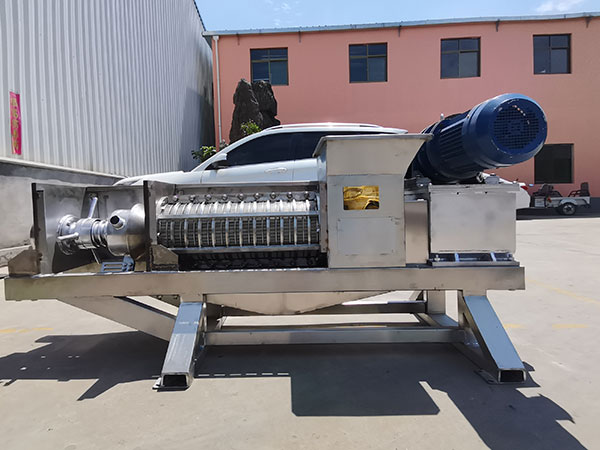
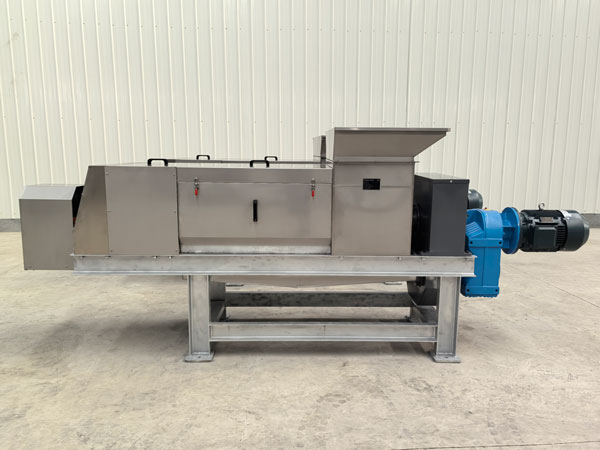
Fruit & Vegetable Waste Dewatering Solution
1. Integrated Shredding and Dewatering System
Our dewatering system for fruit and vegetable waste is integrated with a shredder machine. The built-in shredder breaks down large vegetable leaves, stems, or fruit chunks, while the screw press then squeezes out the liquid. This streamlined operation saves space and increases processing capacity. You can also use a shredder machine separately to crush the materials into small pieces and then feed them into the screw press machine.
2. Advanced Screw Press Technology
We offer different screw designs (single screw, double screw, and tapered screw) for different materials. The screw press system relies on mechanical pressure, requiring no heat or chemical additives — resulting in low operating costs and minimal energy consumption.
3. Multiple Feeding Options
Depending on your site layout and handling method, we offer two feeding options:
- Trash can lifter – ideal for smaller-scale or batch operations.
- Conveyor belt feeding system – suited for continuous, high-volume waste handling.
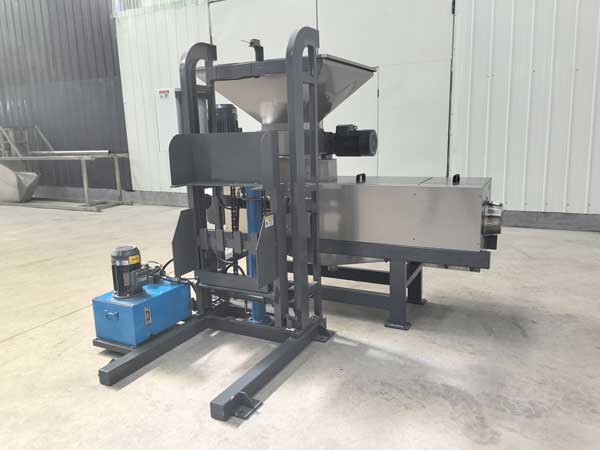
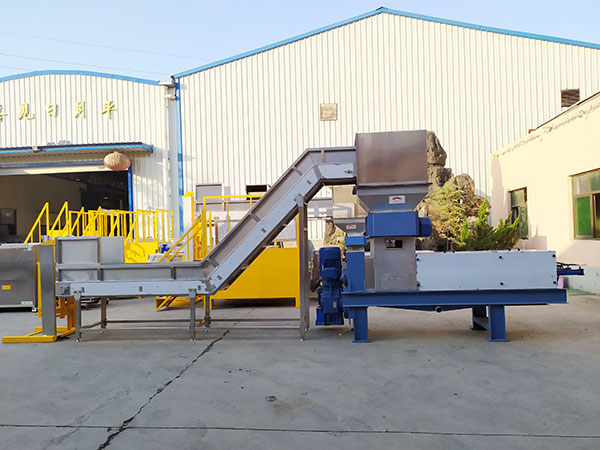
Working Principle
The working process of our fruit and vegetable waste dewatering machine can be divided into four main stages:
1. Feeding & Shredding
Feed the waste material (vegetable leaves, stems, peels, fruit pulp, etc.) to the shredding chamber via the feeding system. The rotating blades cut and tear the material into smaller pieces, ensuring smooth and continuous feeding into the screw press.
2. Pressing
Inside the press chamber, the screw shaft conveys the shredded material forward while gradually reducing the space between the screw. This creates increasing pressure, squeezing the water content out through the screen.
3. Discharge
The liquid passes through the screen mesh and is discharged from the liquid outlet. This liquid can later be used for biogas generation, composting, or wastewater treatment. While the dewatered solids are discharged at the outlet at the end. The solids are suitable for reuse as fertilizer or feedstock.
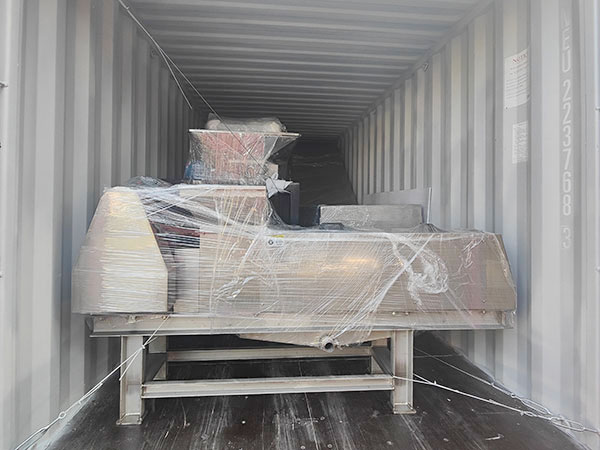
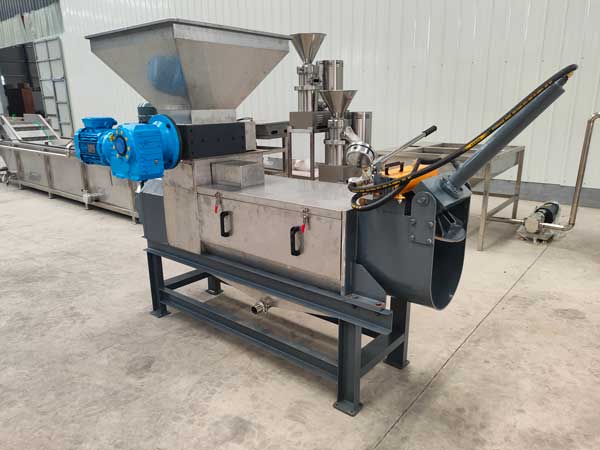
Why Choose Fuxun Machinery?
✅ Customized Solution: We will analyze your materials to design a dewatering system — adjust critical parameters such as screw pitch, compression ratio, screen mesh size, and motor speed to better fit your specific needs.
✅ Proven Dewatering Efficiency: Our fruit and vegetable waste dewatering machine reduces liquid content to about 60%, cutting handling and transport costs significantly.
✅ Energy-Efficient Operation: The entire process relies on mechanical pressure, with no thermal drying — reducing energy consumption and operating costs.
✅ Comprehensive Support: From design to installation, commissioning, and after-sales service — Fusion Machinery provides complete waste management solutions tailored to your facility.
Contact Fuxun Machinery today to get a customized solution for your organic waste processing needs.


